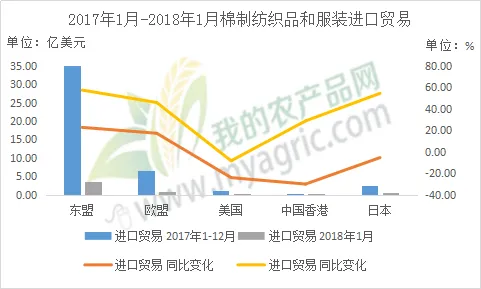The Revolutionary Advancements in Adding Graphene to Textiles
Graphene, a two-dimensional material with exceptional mechanical and electronic properties, has been increasingly explored for its potential in enhancing the performance of textiles. This paper reviews recent advancements in incorporating graphene into textiles, focusing on its applications in enhancing wear resistance, thermal conductivity, and electrical conductivity. Various methods such as direct blending, inkjet printing, and spray coating have been employed to integrate graphene into textiles. The resulting materials exhibit improved durability, thermal efficiency, and electrical conductivity compared to traditional textiles. However, challenges such as cost and scalability remain significant barriers to widespread adoption. Further research is needed to optimize the integration process and explore the full potential of graphene in textiles.
Introduction: The integration of graphene into textiles is a game-changer that has the potential to revolutionize both fashion and technology. Graphene, a two-dimensional carbon material with extraordinary mechanical properties, electrical conductivity, thermal conductivity, and optical transparency, has been making headlines for its remarkable capabilities. In this article, we will delve into how graphene can be incorporated into textiles, the benefits it brings, and how it's being used in real-world applications.
Benefits of Graphene in Textiles:
- Enhanced Durability: Graphene offers superior resistance to wear and tear, making it ideal for use in high-traffic areas like sportswear or outdoor clothing.
- Superior Styling: Its exceptional light absorption and reflection properties make it an excellent choice for creating vibrant, colorful patterns on fabrics.
- Improved Insulation: Graphene’s exceptional thermal conductivity makes it an ideal material for developing warm but breathable textiles for winter wear.
- Enhanced Light Emission: It can be used to create luminescent textiles, adding a new dimension to nighttime wear and accessories.
- Improved Electrical Conductivity: Graphene-infused textiles can improve the performance of electronic devices, such as touchscreens, by reducing their power consumption.
Applications of Graphene in Textiles:
- Smart Textiles: Graphene can be integrated into smart textiles that respond to changes in temperature, humidity, or pressure. This technology could lead to innovative clothing that adapts to the wearer’s body needs.
- Medical Wearables: Graphene-based textiles could be used in medical applications, such as wound dressings or prosthetics, where they offer superior healing capabilities and comfort.
- Sportswear: Graphene-infused athletic apparel could provide enhanced performance, reduced weight, and improved energy efficiency.
- Fashion Accessories: Luminescent or reflective textiles made from graphene could revolutionize the way people dress, offering unique visual experiences and increased safety at night.
- Home Appliances: Graphene-coated textiles could be used in home appliances like ovens, air conditioners, and heaters, improving their efficiency and durability.
Real-World Case Studies:

- Nike: Nike has been experimenting with graphene in sportswear for years. Their latest innovation, the Air Max 97, incorporates graphene into the upper part of the shoe, providing enhanced cushioning and support while also reducing weight.
- Apple: Apple has explored the use of graphene in its own products, including the iPhone X’s Face ID system, which utilizes graphene sensors for facial recognition.
- Volvo: Volvo has developed a line of electric vehicles equipped with graphene-infused materials, aiming to reduce weight and increase fuel efficiency.
Conclusion: The integration of graphene into textiles is not only a trend but a necessity for the future of fashion and technology. As more research and development continue to explore the potential of this revolutionary material, we can expect to see even more innovative applications emerge in the coming years. Whether it’s enhancing our daily wear or revolutionizing industries like medicine and transportation, graphene is poised to change the world as we know it.
亲爱的,你好!今天我们来聊聊石墨烯如何轻松加到纺织品上的话题,石墨烯是一种新型纳米材料,具有许多令人惊叹的特性,如高导电性、高热稳定性等,将其应用到纺织品中,不仅可以提升产品的性能,还能为纺织行业带来新的发展机遇。
石墨烯的特性及其在纺织品中的应用
石墨烯具有出色的导电性、热稳定性以及优异的机械性能,在纺织品领域,石墨烯的应用主要体现在以下几个方面:
- 增强纤维强度和耐磨性:石墨烯可以显著提高纤维的强度和耐磨性,使其在各种纺织材料中表现出色。
- 提高导电性能:石墨烯可以增加纺织品的导电性,使其成为理想的电子材料。
- 创新面料设计:石墨烯可以与其他纤维材料结合,创造出新颖的面料款式,满足不同消费者的需求。
石墨烯的添加方法及案例分析

添加方法:
(1)粉末法:将石墨烯粉末直接添加到纺织品生产过程中,这种方法简单易行,适用于大规模生产。 (2)溶液法:将石墨烯溶液与其他纺织材料混合,通过湿法或干法工艺进行添加,这种方法可以控制石墨烯的含量和分布,适用于精细工艺要求。
某知名品牌采用石墨烯粉末法,成功将石墨烯添加到纺织品中,他们利用先进的生产工艺,将石墨烯粉末均匀地分散在纤维中,制作出了具有高强度和高导电性的纺织品,这种纺织品不仅具有优良的性能,还受到了消费者的高度认可。
案例分析:
(1)优点:石墨烯的添加可以提高纺织品的强度和耐磨性,使其在各种环境下都能保持良好的性能,石墨烯的导电性能可以应用于电子领域,为电子产品带来更好的性能和寿命。
(2)适用范围:石墨烯适用于各种类型的纺织品,如服装、家居用品等,通过与不同纤维材料的结合,可以创造出新颖的面料款式,满足不同消费者的需求。

实际操作步骤与注意事项
- 准备工作:确保纺织品表面清洁干燥,准备好石墨烯粉末和其他相关材料。
- 添加方法:将石墨烯粉末均匀地加入到纺织品生产过程中,通过适当的工艺控制石墨烯的含量和分布。
- 注意事项:在添加过程中要注意控制温度、湿度等环境因素,确保石墨烯能够均匀地分散在纺织品中,还要注意避免对环境造成污染。
结论与展望
石墨烯作为一种新型纳米材料,具有许多令人惊叹的特性,将其应用到纺织品中,不仅可以提升产品的性能,还能为纺织行业带来新的发展机遇,在实际操作中,需要注意控制环境因素、避免污染等事项,随着科技的不断进步,石墨烯的应用前景将会更加广阔。
希望这个关于石墨烯如何加到纺织品的话题能够帮助你更好地了解相关知识,如果你还有其他问题或需要更多信息,随时告诉我。
Articles related to the knowledge points of this article:
The Art of Textile Treasures:The Story of 珍之韵纺织品
Traditional Chinese Home Textiles:A Journey Through the中式古典家用纺织品案例分析



